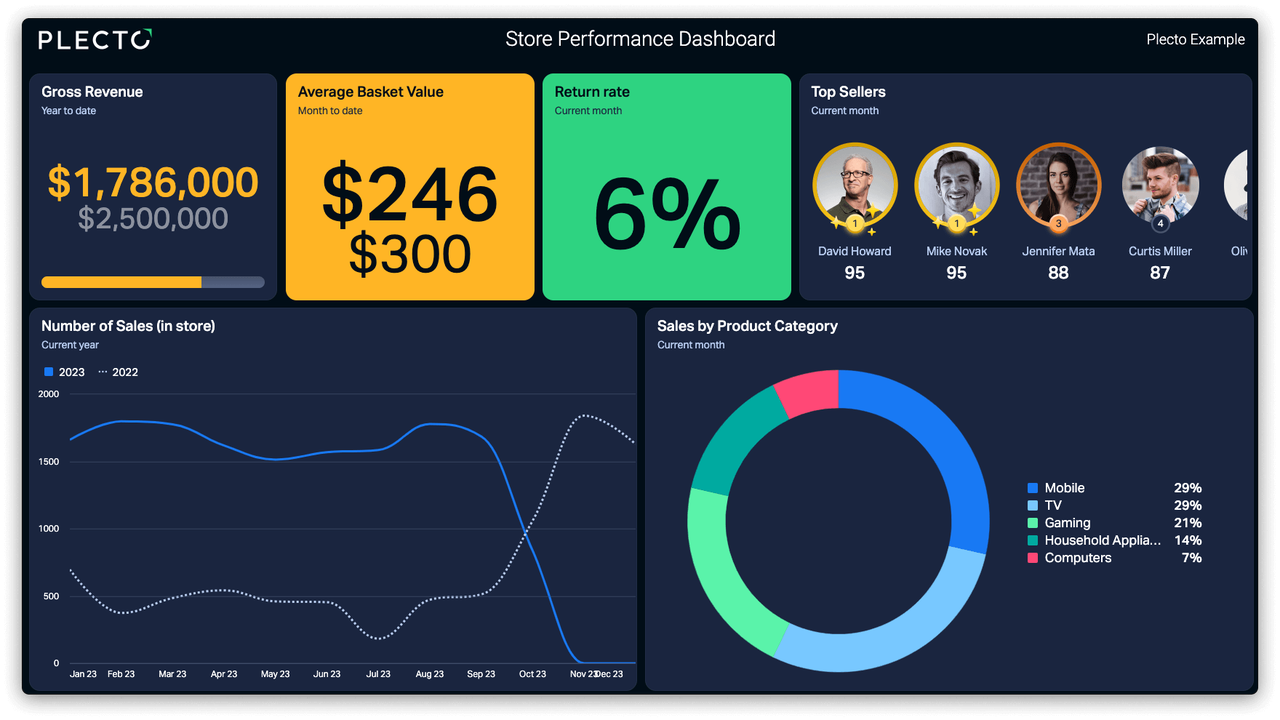Why physical retailers need Store Performance Dashboards
Identify what's selling
Retail is a data-driven business, and store performance dashboards enable retailers to know exactly what's happening their data. This dashboard gives teams the breakdown of which of your inventory sells the most. As a result, this enable retailers to better focus your efforts on what's driving the most revenue, and adjust your strategy as a result.
Identify who's selling
Sure, it's crucial to stay on top of what's selling, but it's just as important to get the overview of which of your team members are selling the most.
In busy retail environments, sales numbers and other key performance indicators can easily be overlooked amidst the busy hustle and bustle of the shop floor. Introducing gamification on your dashboard helps rectify this. For example, set up instant notifications so that whenever a team member has made a sale, the whole team is aware of it.
Combine with your contact center
If you're like many retailers, then you will combine your physical stores with an offsite contact center for customer support. With Plecto, there is no limit to the number of dashboards you can create, meaning you can have dedicated dashboards to all areas of your operations.
This makes it a great way to boost synergy between your brick and mortar store and the office site call center. Want to learn more? Discover the success stories of Danish clothing retailer Shaping New Tomorrow and Swiss telecom giant Sunrise.
